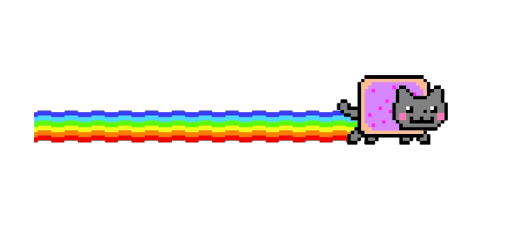



Ilona Kovacs
Professor Noah Travis Phillips
Internet Art Cultures
May 11th, 2021
Exploratory Writing 7A
 I find it interesting to explore NFTs, or Non-Fungible Tokens, as someone who creates digital art and wonders constantly about the accessibility of other artists' work. When an NFT is purchased of a tweet, image, or even sport highlight reel it becomes a uniquely tracked individual block within the blockchain and cannot actually be traded for something of the same value in the way that our 'physical' money can. Like a famous painting done by a historical master, NFTs are originals that can be loaned, traded for Ethereum or cryptocurrencies (this would be 'physical' money previously), or even just kept and admired. They are strictly digital, and while recreations and copies are often made and distributed throughout the World Wide Web, NFTs signify ownership of the original digital piece rather than any redistributions.
I find it interesting to explore NFTs, or Non-Fungible Tokens, as someone who creates digital art and wonders constantly about the accessibility of other artists' work. When an NFT is purchased of a tweet, image, or even sport highlight reel it becomes a uniquely tracked individual block within the blockchain and cannot actually be traded for something of the same value in the way that our 'physical' money can. Like a famous painting done by a historical master, NFTs are originals that can be loaned, traded for Ethereum or cryptocurrencies (this would be 'physical' money previously), or even just kept and admired. They are strictly digital, and while recreations and copies are often made and distributed throughout the World Wide Web, NFTs signify ownership of the original digital piece rather than any redistributions.
Because NFTs are limited to our digital realm and copies are extremely commonly spread over the internet, purchasing and proving that the NFT came from an original artist becomes a bit of a sketchy situation. You  can't always trust what you read on the internet or something like that... On the other hand, when the contractual trade of the NFT is actually true and verified as original, it raises the value of all digital art. Digital pieces become a scarcity like original physical artworks because there is only one original. More so, it's the difference of seeing a band perform live in person versus listening to their Spotify tracks through your phone speakers.
can't always trust what you read on the internet or something like that... On the other hand, when the contractual trade of the NFT is actually true and verified as original, it raises the value of all digital art. Digital pieces become a scarcity like original physical artworks because there is only one original. More so, it's the difference of seeing a band perform live in person versus listening to their Spotify tracks through your phone speakers.
These digital worlds have been continuously growing, expanding, innovating throughout my entire lifetime and NFTs has become another new branch that currently is not widely nor incredibly understood. Historically, even computers were considered niche or were nowhere near as common and regular as they are now, but it took people time to learn these new advancements. Once something becomes widely accessible, it often slowly becomes normalized as well. Currently, NFTs are seen as scary and confusing to most, but the implications of benefits for all digital artists continues to strengthen the case for supporting them. This goes even further into the controversy surrounding the environmental impacts of NFTs, when minting an NFT would not actually alter a computer's consumption. NFTs can protect artists and provide an extra sense of security for their original pieces and their finances, especially when locked into a situation where the NFT cannot be reproduced physically even by the 'owner.'
Ownership can be been a strange and kind of uncomfortable topic for artists, and with the growth of digital art and media this only becomes more difficult to oversee or control. Because of the culture and lifestyle commonly follow in the United States, there is a large emphasis on ownership - whether it be property, the latest overpriced designer purse and shoes, or art. This typical and historic American Dream almost surrounds the concept of owning the most or best of a thing. In the grand scheme of understanding US culture and economics, NFTs feel like an open opportunity to store and hide money that someone maybe is not supposed to have... a new offshore account or even a more discreet way to launder, only it's an ownership certificate and a gif.